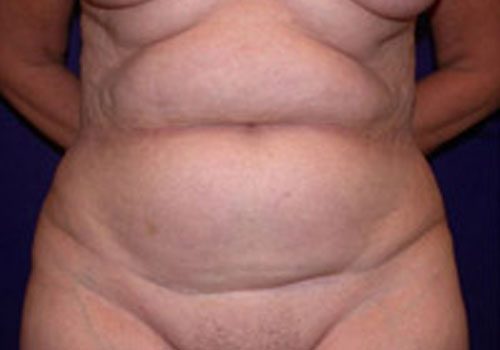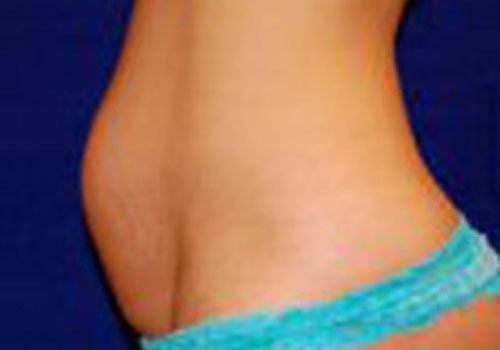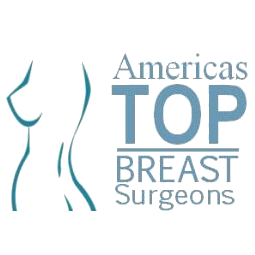Tummy Tuck (Abdominoplasty) Surgery in Dallas, TX
Pregnancy, aging, and major weight fluctuations can result in stretched-out abdominal muscles and loose, sagging skin in the midsection. If this sounds familiar, tummy tuck surgery or “abdominoplasty” could help you achieve a flatter, better-contoured waistline and lower abdomen.
What Are the Benefits of a Tummy Tuck?
Improved Abdominal Contour
Abdominal bulges and laxity are caused by loose skin, stubborn fat, and weakened or separated abdominal muscles. Tummy tuck surgery addresses all three of these concerns and gives you a tighter and smoother abdominal contour. This surgical procedure helps you revitalize this tough-to-tone area and allows you to show off your new contours.
Get Rid of Loose Skin and/or Stretch Marks
Pregnancy or weight loss can leave sagging skin and stretch marks on the abdomen. No amount of diet or exercise can help significant stretched skin return to its youthful elasticity. Tummy tuck surgery removes damaged, excess skin of the lower abdomen along with many stretch marks to give you a flatter, smoother, and more youthful abdomen.
Eliminate Stubborn Fat
Belly fat can be particularly resistant to exercise and diet. Abdominoplasty corrects the tummy bulges caused by stubborn fat and removes the excess fatty tissue to create flatter and smoother abdominal contours. This is commonly performed alongside liposuction to tone the abdomen and the surrounding areas, including the hips, flanks, back, and buttocks.
Tighter Abdominal Tone
Fluctuations in weight, pregnancy, and previous surgeries can cause your core muscles to become weak, damaged, and stretched. Tummy tuck surgery restores the tight alignment of the abdominal muscles to create a firmer abdominal tone. This can even repair full ab separation (diastasis recti).
Restored Youthful Body Contours
Because a tummy bulge is often caused by pregnancy or aging, irregular abdominal contours can make you look older or “matronly.” Abdominoplasty removes excess skin, tightens the muscles, and eliminates fat to produce a more youthfully firm and flat waistline. This can be combined with other body contouring procedures for enhanced results.
Am I a Candidate For a Tummy Tuck?
What Are My Tummy Tuck Options?
Standard Tummy Tuck
Full/Traditional
Best for: Patients with moderate excess weight, sagging skin, and muscle wall laxity, especially due to pregnancy, weight loss, or aging
- Addresses both the upper and lower abdomen
- The incision runs horizontally from hip to hip
- Trims away excess skin
- Removes stretch marks on the skin that is removed during the procedure
- Eliminates stubborn belly fat
- Sometimes incorporates liposuction to further contour the results
- Tightens and rejoins separated or stretched abdominal muscles
- Repositions the navel in an anatomically correct and more youthful position
- Produces a smooth, shapely, and sculpted midsection
Best for: Patients in good shape with minimal loose skin and slight muscle separation
- Addresses the lower abdomen only
- The incision is shorter (not much longer than a C-section scar) and can be hidden behind a bathing suit
- Trims away excess skin in the lower belly
- Removes stretch marks that appear on the skin that is removed during the procedure
- Tightens lower abdominal muscles
- Eliminates stubborn lower belly fat
- Produces a flatter and firmer lower abdomen
Extended Tummy Tuck
(Circumferential / Body Lift)
Best for: Patients who have lost a tremendous amount of weight and have laxity of the sides, hips, and backside in addition to the abdomen
- Most commonly used after massive weight loss, especially for successful dieters and weight loss surgery patients
- The incision extends around the outside of the hips
- Trims away deflated, loose skin from the abdomen all the way around the midsection
- Removes stretch marks that appear on the skin that is removed during the procedure
- Eliminates stubborn belly fat
- Typically incorporates liposuction to further contour the results
- Tightens and rejoins separated or stretched abdominal muscles (corrects diastasis recti)
- Repositions the navel in an anatomically correct, elevated, and more youthful position
- Produces a smoother and better-contoured abdomen, waistline, and lower body
- This is also commonly referred to as a full body lift
What Is Tummy Tuck Surgery?
How to Prepare for Tummy Tuck Surgery
- Pillows to prop yourself up
- Prescriptions
- Water and healthy snacks
- Electronics (phones, tablets), chargers, and television remotes
How Is a Tummy Tuck Performed?
What Is Recovery Like After a Tummy Tuck?
- For all techniques, patients should rest and remain bent at the waist for two to three days after surgery to avoid excessive pulling at the incisions. Most patients will be able to transition to fully upright by day three or four of recovery.
- Any pain can be treated with oral medications and an optional ambulatory pain medication pump that can be worn discreetly under clothing for three to five days after surgery.
- An abdominal binder should be worn for two to four weeks for added support and compression to minimize swelling.
- The timeline for returning to work can range from two to four weeks.
- Exercise should be postponed for a full six weeks. By this point, most of the swelling will be gone, and the results will be visible.
What Can I Expect From My Tummy Tuck Results?
Schedule a Consultation
Why Choose Dr. Morales for Your Tummy Tuck Surgery?
Dr. David Morales is board certified in both plastic and reconstructive surgery and continues to stay on the cutting edge of advancements in cosmetic surgery. His training and experience, combined with his skill and artistry, make him an excellent choice for your tummy tuck surgery in Dallas.Before & After
Frequently Asked Questions
Scars are likely to form wherever the incisions are made. Patients who get a mini tummy tuck are likely to have more modest scarring than patients who get other tummy tuck techniques. However, since scars are to be expected with all techniques, patients should take care to place the highest priority on choosing the technique that will give them the best overall results for their body contour.
Scarring is also affected by your ability to heal. Whenever possible, scars are placed discreetly so that they may be hidden by clothing. To minimize scarring from your incision, carefully follow the post-operative instructions given to you. All scars are likely to fade over time.
Abdominoplasty is not a weight loss procedure like the lap band or bariatric surgery. A tummy tuck is a body contouring procedure that restores a firm and flat abdomen. At most, patients will lose a small amount of weight from the removal of excess skin and belly fat. Still, the benefits of improving and rejuvenating your waist contours may create the impression that you have lost weight.
Learn more about the connection between tummy tuck and weight here.
If a tummy tuck is performed strictly for cosmetic reasons, it is typically not covered by insurance. However, there are some cases where part or all of your tummy tuck may be covered by insurance.
If you have diastasis recti (separated abdominal muscles), a condition that is often caused by pregnancy, it can cause abdominal weakness, stress incontinence, back pain, and other issues that affect your quality of life. A tummy tuck to repair diastasis recti may be wholly or partially covered by insurance.
A tummy tuck may also be covered by insurance if you have significant excess skin that affects functionality or causes chronic skin issues (like chafing, rashes, or infection). The best way to determine if your tummy tuck is covered by insurance is to contact your provider so you understand the requirements for coverage.












